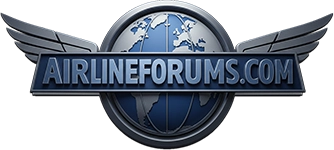BoeingBoy said:
funguy2,
I doubt that there's an escrow account somewhere to hold the money from ticket sales until the transportation is provided. It may just be a difference between actual cash flow and reported cash flow - the reported numbers being in line with travel patterns while actual flows follow buying patterns.
Jim
Boeing Boy:
I am not sure if I exactly follow... But I'll give it a whirl..
I think you are right... There is not an escrow account per se. But cash flow is cash flow... I think what you are calling "Reported Cash Flow" is revenue...
Let me break it down with a simple, it doesn't really work this way, example...
I buy a ticket from PIT to CLT on March 15th for $200 + taxes. My travel will occur on April 15.
That $200 is recorded as an cash inflow. The cash goes into USAirways main bank account. It is also recorded as an increase of cash assets of $200 on the balance sheet. The liability side of the balance sheet also increases by $200 (the value of the liability that US Airways owes me as they are liable to provide my transportation on April 15th).
Now on April 15th, lets say that it costs US Airways $180 to provide me the seat on the flight from PIT to CLT. On April 15th, on the income statement, $200 revenue will be recorded and an expense of $180 will be recorded. If nothing else occured that day, US Airways made a profit of $20. Meanwhile, on the Cash Flow statement, an outflow of $180 is recorded. US Airways cash balance has now increased by $20, again assuming nothing else occurs between March 15 and April 15. On the balance sheet, the $180 liability is removed, and $180 of cash asset is removed, thus assets increased by $20.
This whole thing of cash flow is a little bit more confusing than "a normal" business because of the "pre-payed" nature of this industry.
So while there is no separate escrow account per se, it kind of works like when you write a check... You record the check in your checkbook when you write it, but the money doesn't actually go out of your account until the bank clears your check a week or so (whenever) later. In the meantime, that money is yours, but you've already committed it.
In fact, if you want to continue that analogy further, bankruptcy is like a big bounced check, when you write the check before you know how much your automatic deposit from work will be, and then all of a sudden, the check you wrote is more than the deposit... Well, thats a problem. And if you only have one bank account and no savings, well you stuck the bank with a bad debt... and voila, bankruptcy.
